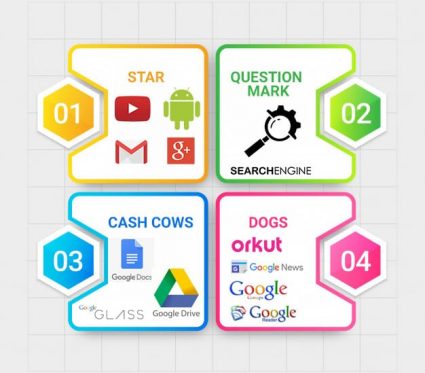Contents:

Through involvement, it’s believed that worker dedication to a deliberate https://1investing.in/ of action might be enhanced and efficiency might be extra environment friendly. In this digital era, we all are somehow accustomed to the word “Information System” although not well-versed with the concept or definition. If asked what is “Information System” one will definitely say the words like computer or network or database. But an information system is much more than just a computer or network.

- This step includes honest feedback on what was achieved and not achieved for each employee.
- Edwards Deming, argue that setting particular goals like production targets leads workers to meet those targets by any means necessary, including shortcuts that result in poor quality.
- Since then, many businesses and non-business organizations adopted the MBO technique in some form or other.
- However, the manager must note the failures and excuses so they can fix them in the future with appropriate corrective actions.
- As such, MBO is still an important management model to examine for companies today.
Collaboration is another key factor in staying organized as it involves working together as a team to ensure that all tasks are completed in a timely and effective manner. Communication is the last of the three C’s and is arguably the most important – without clear and effective communication the entire organization can easily become chaotic. The three C’s of organization are clarity, collaboration, and communication. This leads to increased productivity and motivation as each tangible success brings the feeling of achievement and satisfaction.
It can also increase employee satisfaction and motivation by providing a clear and achievable roadmap towards success. Here the management objectives are set at the very first step by passing through various managerial activities and then pass through a communication channel to the employees. Performance appraisals are the final step of the process of Management by Objectives.
What is management by objectives and its advantages and disadvantages?
It may be emphasized that Key Results Areas are derived from the expectations of various stakeholders and indicate the priorities for organizational performance. An important part of the MBO is the measurement and comparison of the employee’s actual performance with the standards set. It includes ongoing tracking and feedback in the progress to reach objectives.
Total Quality Management is an approach to management focused on the continuous improvement of processes, products and services through a rigorous evaluation of how a business is operating. An example of TQM in action would be a company setting standards for customer service excellence. These include, for example, the Objectives and key results method, which was developed by John Doerr and has been used successfully in many companies, notably at Google. Agile management techniques also have a strong emphasis on goals. The group of management techniques that are based on goals, with a strong focus on engagement, team motivation and leadership, can be summarized as Management by Goals methods.

One of the later developers of the model, Douglas MacGregor, insisted that MBO as a system was better at helping the superiors of a company more effectively assess their subordinates. Management by Objectives is a system of management adopted by organizations to organize and motivate employees, as well as improve their performance in meeting the goals of the organization. Modern business operations is an administration technique with the purpose of increasing business performance by modifying goals and subordinate goals across the whole organization. Overall, MBO emphasizes the importance of focusing on results rather than the specific exercises in question.
What are the 3 learning objectives?
The story begins in the same place as the first two choices, and the main characters are the same. The story is set up with a single mission of the future, a goal to end a world and to save the world. As the story progresses, the story of the future changes from one location to another. The next level has a mission to complete the world, and the mission is to take control of the world. MBO helps employees achieve complete clarity of what is expected of them by the managers. As a result, they know where they fit into the larger picture.
With these actions, you’ll help team members develop self-confidence and self-motivation. In management by exception , management only addresses instances where objectives or standards are transgressed. Thus, workers are left alone until and unless proficiency is not met. Employees are encouraged to meet targets by any means necessary, meaning that shortcuts could be taken and the quality of work compromised. Employees take pride in their work and are assigned goals they know they can achieve that match their strengths, skills, and educational experiences. Full BioAmy is an ACA and the CEO and founder of OnPoint Learning, a financial training company delivering training to financial professionals.
Palace Capital suffers board exodus – QuotedData
Palace Capital suffers board exodus.
Posted: Tue, 19 Jul 2022 07:00:00 GMT [source]
By comparing actual productivity to a given set of standards, managers can identify problem areas and improve efficiency. Both management and workers know and agree to these standards and their objectives. A regular review of the performance of the employee within organizations is called performance appraisal. Performance appraisal helps the organization to know about an employee’s job performance, their ability for further growth and development. In conclusion, the main difference between MBO and MBE is the level of involvement in decision making. MBO is a proactive approach, with the manager setting objectives and providing feedback.
They must also be allowed to sit for performance management discussions to develop objectives and solutions, together with the management. This way, they can improve on errors and inefficiencies in their work. This step of objectives management is integral to the MBO approach.
Click Here to Download Management by objective (MBO) pdf.
These objectives are Survival, Profit and Growth of an organisation. Philosophy We believe every organization is capable of high performance. Employee Engagement Learn about the importance and methods of engaging employees. KPIs Track fast-paced processes with KPIs to drive performance every single day. Meetings Make meetings powerful decision-making engines to give time back to every employee. If a team member reaches their goal at the end of the quarter, they are rewarded with a paid bonus.

In essence, MBO focuses on tying objectives to many aspects of business such as customer service, innovation, budgeting, strategy, communication, and technology. The Define stage enunciates the goals and objectives of the project and develops a project plan to meet those goals. The Measure stage defines the current process performance using statistical and other analysis tools. It emphasizes setting, reviewing and revising goals in order to improve performance and focuses on results rather than methods.
The pros and cons of MBO
In the 70 cases studied by Robert Rodgers and John Hunter, 68 showed increased productivity gains, and only 2 showed losses.63 In addition, the increases in performance were significant. Rodgers and Hunter report that the mean increase exceeded 40 percent. Leaders must identify clear, realistic, measurable, and achievable objectives that are aligned with the company’s mission and values, to guarantee the best results. For the digital marketers on the team, their personal objectives are to secure three new marketing clients for the quarter. Lean Six Sigma is a team-focused managerial approach that seeks to improve performance by eliminating waste and defects. Total quality management aims to hold all parties involved in the production process as accountable for the overall quality of the final product or service.
- It supplies a higher alternative to managers for private satisfaction on account of participation in goal setting and rational efficiency appraisal.
- The hazard of inflexibility additionally causes a major problem since managers might attempt for targets that were made out of date by revised company objectives, modified premises, or modified insurance policies.
- They focus on day-to-day activities and specify what immediate results are expected from actions currently under way.
- If asked what is “Information System” one will definitely say the words like computer or network or database.
- As goals and objectives have been SMART formulated, they make the evaluation of processes very easy.
the three types of mbo objectives are’s core objective is to ensure that processes, products and services are consistently meeting customer needs and expectations. MBO’s clear objectives provide beneficial direction and motivation to the individual employee by setting clear expectations with respect to personal achievement through a regular performance assessment process. MBO also relies heavily on team collaboration and communication, which can result in a complex and lengthy process.
Operations management is the administration of business practices to create the highest level of efficiency possible within an organization. A performance appraisal is a regular review of an employee’s job performance and overall contribution to a company. The term “management by objectives ” was first used by Peter F. Drucker in his 1954 book titled The Practice of Management. MBO outlines five steps that organizations should use to put the management technique into practice. The MBO approach does not emphasize the significance of the context wherein the goals are set. The context encompasses everything from resource availability and efficiency to relative buy-in from the leadership and stakeholders.
Appraisal of What Performance? – HBR.org Daily
Appraisal of What Performance?.
Posted: Thu, 06 Nov 2014 23:23:56 GMT [source]
Managers help ensure that subordinates’ goals are related to the objectives of the organization. Emphasis on short-run targets typically jeopardizes the achievement of long-term objectives. Objectives can’t be established without planning, and results-oriented planning is the one form that is smart. MBO forces managers to consider planning for outcomes, somewhat than merely planning work or actions.

They tend to stick to the organisation for a longer span of time and contribute successfully. They experience the place of work and do no longer treat work as a burden. Management by Objective defines roles and responsibilities for the employees and to help them find out their future course of action in the organization.
The MBO system is defined by five steps, but there are actually a few additional components to consider. Each of these do come into play in the steps but may require extra attention or reorganizing in the event that the system seems to be non-effective. As such, MBO is still an important management model to examine for companies today. The principles outlined have the potential to work as solid tools within a broader scope of knowledge about management styles. It involves defining the objectives and goals of the organization and also passing across these goals to every member of the organization. Both these goals are to be integrated to achieve the objectives of any enterprise.
